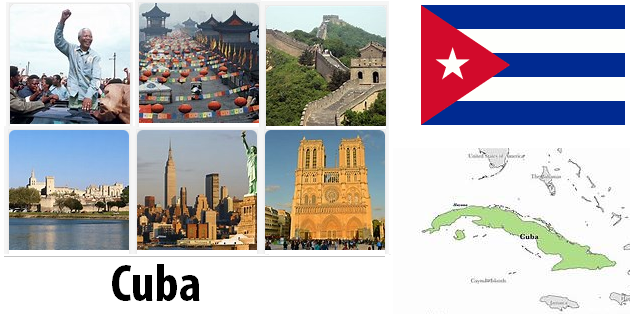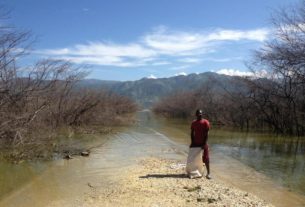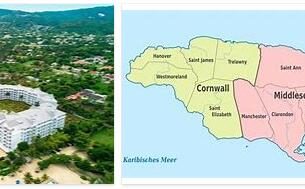Christopher Columbus landed on October 28, 1492 in Cuba where he was greeted with great hospitality by the natives. And referring to
that island of the Greater Antilles which currently has the name of Cuba, he wrote: “It is the most beautiful island that human eyes have ever seen”.
Many things contributed to this judgment: the mildness of the climate, the extraordinary variety of vegetation, the intense blue of the sky, the very jagged coasts, so as to make the Cuban coast, especially the Atlantic coast, a succession of protrusions and inlets that constitute excellent natural harbors. What struck Christopher Columbus were also the characteristic customs of the natives and it was the “Indians” who taught Europeans the use of tobacco,
Columbus also made a second trip to Cuba in 1494; traveled large stretches of coast, discovered the present Isle of Pines, which he then called “Evangelist”; then he left the island without ever returning. He certainly had knowledge of the shape of the island of Cuba, so much so that in 1500 Juan de la Cosa was able to draw the map, but the first circumnavigation was accomplished only in 1508 by Sebastiano de Ocampo.
Colonization of Cuba began in 1511 by. Diego de Velasquez, who landed there with 300 volunteers, including Hernan Cortes, the “conquistador” of Mexico.
The first city founded by the Spaniards in 1512 was Baracoa. Diego de Velasquez founded Havana and Santiago de Cuba, but very few traces remained of those first inhabitants who in the mid-1500s had almost all emigrated to Mexico, attracted by gold and silver, the main riches of that subsoil.
A hundred Spaniards remained on the island, with a few thousand “Indians” and a few hundred Negro slaves imported from Africa for work on the plantations.
In 1550 the island was elected to Governorate and had Havana as its capital and in 1580 the Capitaneria Generale was established
.
Then in 1607 Cuba was divided into two administrative regions: one with the capital Havana and the other with the capital Santiago, both politically dependent on the Audiencia of Santo Domingo, while the Santiago region militarily depended on Havana.
In fact, political activity was scarce while there were constant disputes between the various authorities in relation to the allocation of lands and “commendations” to the population. See Countryaah for population and country facts about Cuba.
At that time, the smuggling was managed by pirates, especially the French, who infested the island. They were definitively eradicated around 1698 after a treaty between Spain, France and England was concluded.
In 1762 a war broke out between Spain and England from which an expedition had started, under the orders of Admiral Lord Albemarle, to conquer the island, which actually took place on August 13 of that year with the capitulation of Havana.
In Versailles on 10 February 1763 the peace treaty was signed which established the liberation of Cuba by the British in exchange for Florida, which Spain was depriving itself of.
And in that period yearnings of freedom also entered Cuba after Spain was occupied by Napoleon and in July 1808 the Cuban authorities met to challenge both the usurper Giuseppe Bonaparte and the Spanish rule. The first riots began and there was the first martyr, the negro Josè Antonio Aponte who attempted to emancipate the natives, but was taken prisoner and executed with 8 other conspirators in 1812.
Since then, the first secret societies were formed, which formed the first freedom program. Meanwhile in Mexico Cuban emigrants formed a Promoting Junta of Freedom in 1825, and the following year the first martyrs occurred: F. de Aguero y Velasco and A. Manuel Sanchez, hanged by order of General Vives. And from that moment the Crown of Spain entrusted the administrative, military and judicial powers to the captain general alone, thus creating the first dictator.
The struggle for the island’s freedom became increasingly intense also because it was encouraged and supported more and more by the United States, which intended to annex Cuba at the expense of Spain. The United States had already made a first attempt for this purpose in 1825. To this end, in l848 the United States Minister in Madrid was authorized to offer Spain the sum of 100 million dollars. In 1852 the Secretary of State of the United States, Everett, declared that they would never challenge Spain’s rights to Cuba. In 1854, however, the “Ostend Manifesto” was drawn up, signed by the United States ministers in London, in Paris and Madrid, in which it was declared that Cuba for its geographic situation and for other considerations deriving from it was indispensable to the United States like the other members that made them up. For which they offered the sum of 120 million dollars to Spain for the peaceful transfer, otherwise, if disturbances of order and internal peace of the union had emerged at any time, the Union would have snatched the island of Cuba by force Spanish crown.
This Manifesto was harshly criticized both in Europe and in the United States itself.
Meanwhile two parties had formed: the reformist one of the Creoles and the conservative one of the Spaniards, and between them persisted power struggles, until in 1868 an insurrection broke out which was called the “ten-year war”: against the Spaniards the autonomists, independence activists and unionists (pro USA) led by Carlos Manuel de Cespedes, Francisco Vicente Aguilera and others.
The United States did not intervene but limited itself to making yet another proposal to buy Cuba. In 1873, during the war, the leader of the insurgents Ignacio Agramonte, known as the Cuban Washington who was replaced by Maximo Gomez, died of injuries.
In 1878 the new Spanish Governor, General Martinez Campos, arrived in Cuba. He managed to agree with the rebels; the Pact of Zanjon was signed with the promises of: amnesty for the events of war, abolition of slavery, reforms in government and colonial autonomy. In 1879/80 there was another revolt, called “Little War”, headed by Calixto Garcia, but was easily quelled.
In 1886 the law on the total abolition of slavery entered into force; in 1893 General Calleja decreed the complete civil equality of the Whites and Negroes. But many of the promised reforms did not occur and despite the proclamation of the Constitution on the island, in reality the representation at the Cortes of Madrid was always composed for the most part by Spanish colonists and not by indigenous people. Furthermore, customs reciprocity with the United States had already ceased since 1891, but while Spain imported duty-free its goods to Cuba, this instead saw its goods entering Spanish territory aggravated by duties. With serious damage to the Cuban economy.
In addition, then all the expenses necessary to maintain public order with serious discontent of all came to the local budget, so in February 1895 another rebellion broke out, headed by Maximo Gomez, Josè Martì, Antonio Maceo, Calixto Garcia.
Spain immediately suspended constitutional guarantees and sent military reinforcements to Cuba commanded by Marshal Martinez Campos, who after taking several failures, was replaced by General Valeriano Weiler. He, known for his severe repressive methods, isolated the insurgents in trenches and locked the non-combatants in “Concentration Camps” where they died of hunger and epidemics.
The United States in this circumstance limited itself to supporting the rebels under the table economically, but meanwhile regretted that their trade was affected by the negative effects of this situation.
In 1897, the liberal Sagsta was in government in Spain, who ordered the replacement in Cuba of the Weyler with Marshal Blanco and proclaimed an autonomous government entrusted to Josè Maria Salvez. All this, however, was rejected by the rebels and the United States announced their intervention on 6 December of the same year and sent the cruiser “Montgomery” and then the battleship “Maine” to the port of Havana, thus provoking the protests of the Spain. On February 15, 1898 the “Maine” was destroyed by an explosion of mysterious origin, and then the United States sent Spain an “Ultimatum” which asked for the immediate renunciation of Cuba or, otherwise, they would have invaded the island.
Diplomatic relations between the two states were broken and there was the war that immediately saw the American successes, with the destruction of Santiago de Cuba and the Spanish fleet commanded by Admiral Pascual Cervera y Topete. On December 10, 1898 with the Treaty of Paris, Spain accepted the evacuation of the island and allowed the United States to take possession of it.
Since, however, the United States had always declared itself for the independence of the island, a civil administration was formed in it, with a large indigenous majority, which immediately set the reforms: education was taken care of, public works were carried out and health conditions improved. Then from November 5, 1900 to February 21, 1901, a constituent was held in Havana which drew up a Constitution, modeled on that of the United States, in which the rights of the United States on the territory were recognized, with the related interests, including of naval bases and the prerogative to intervene to defend Cuban independence, should the need arise.
On May 5, 1902 the first Congress of Cuba was called and the First President was elected: Tomas Estrada Palma, then re-elected in 1905.
In August 1906 a revolt broke out by the liberals. Estrada asked for US intervention; they sent federal troops who appointed a provisional government. This ceased in January 1909 when the liberal general Josè Miguel Gomez was elected president of the Cuban republic, who remained in office until May 1913, when he was replaced by the conservative Mario G. Menocal.
During the 1st World War, Cuba, following the US, on 7 April 1917, declared war on Germany, without however participating in military actions.
After the war, the 1920 elections were won by the liberal dissident Alfredo Zayas who, however, took office on May 20, 1921. Meanwhile, in 1919, after enjoying great economic prosperity, Cuba had to resort to US subsidies to cause of a very serious crisis.
In the 1924 elections Zayas supported the liberal general Gerardo Machado who began on May 20, 1925 by ruling with great energy.
In May 1928 the Constitution was revised and the duration of presidential powers increased from 4 to 6 years and Machado was re-elected in 1929, also by virtue of the numerous promises of improvements made to the people.
Unfortunately he did not keep his promises and so in the late 1930s a nationalist revolt took place against him and martial law authorized by Congress was applied.
The revolt, however, continued for a long time; the opposition said it wanted Machado’s resignation; request ignored and in May 1933 the United States intervened with attempts at reconciliation, which all failed. Until a general strike was proclaimed on August 14, 1933, government troops lifted their support for Machado, who had to repair in Montreal, Canada, as the military garrison in Havana had been occupied by some young officers in command of Lieutenant Colonel Delgado.
Dr. Carlos Manuel de Cespedes but in September his government was overthrown by the army, under the orders of Sergeant Batista, who installed in power a junta made up of 5 intellectuals chaired by prof. Ramon Grau San Martin, who after a few days was only in power for the withdrawal of the other members of the Junta.
The riot resumed, with the favor of the people and the military who after a bloody day had to surrender.
Grau San Martin governed moderately without the help of either the communists or the radicals but the US did not recognize him equally so that the inconvenience of both the political and economic situation grew out of all proportion.
An attempt was made to apply radical remedies, but all to no avail; even the students, who were the main supporters of the government, refused Grau San Martin, so much so that on January 15, 1934 he resigned and left power in the hands of Carlos Hevia, who after two days resigned to leave the post to the general A. Mendieta.
As the government began a substantial reform of the Constitution, a general unrest was proclaimed in March 1935, then tamed by Colonel Batista’s army. Mendieta resigned in December of the same year and on the following February 1936 Miguel Mariano Gomez was elected, supported by liberals, nationalists and the “Republican Action Party”.
In May 1936 the famous pact that allowed the US to intervene in Cuba’s internal quarrels was canceled.
At the end of 1936 it was decided to put a sugar tax, which provoked a lively reaction among Batista’s proselytes against President Gomez, who was dismissed. His successor, dr. Laredo Bru did not last long since on 10 July 1937 the government was entrusted with wide approval to Colonel Fulgenzio Batista who immediately began to manage power as a dictator.
In 1940 the new Constitution was approved and Batista immediately found himself struggling with serious social and economic difficulties. During the 2nd World War the cost of living increased and the difficulties worsened despite the help of the US with which it was in line by declaring war on Japan, Germany and Italy in 1941. In 1942 he also broke relations with the Vichy government; signed agreements with the US for the creation of naval bases in Cuban territory and then with Mexico for the war against the German submarines.
In October of that same year he was the first to establish relations with the USSR; in January 1943 he signed the United Nations declaration and in February concluded a friendship treaty with China.



